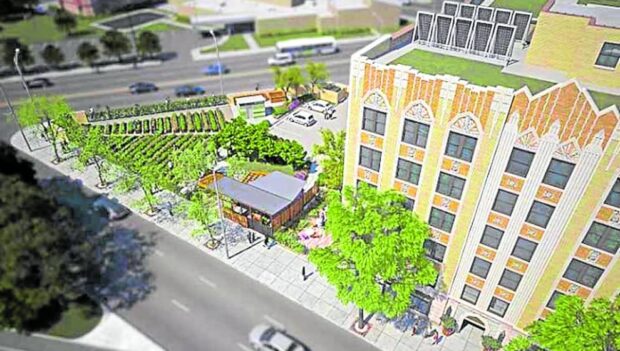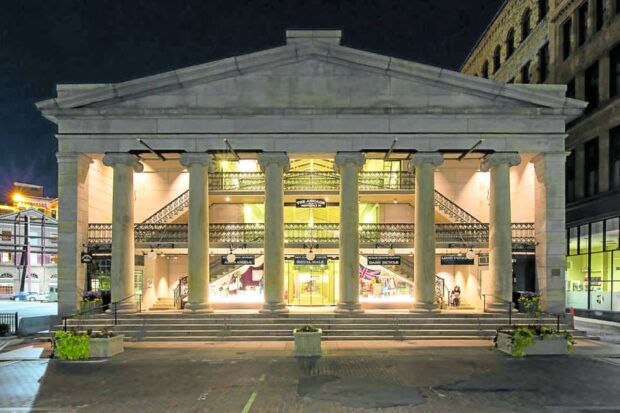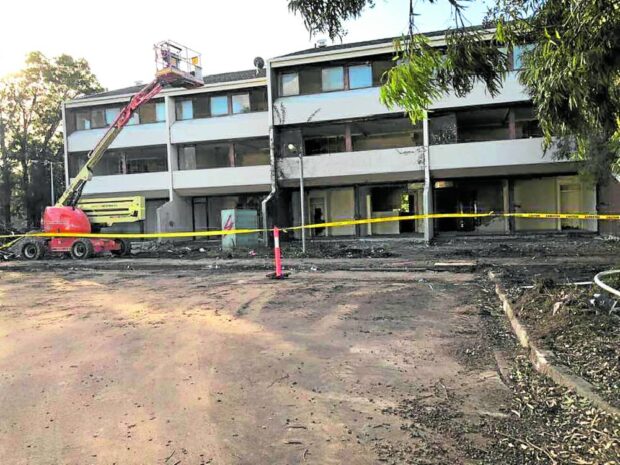Rebuilding through rehabilitation

By incorprorating an urban farm into the property, Harvest Commons found a new way to engage its community.
There is so much effort, resources and time needed to construct a community.
Whether it’s a sprawling neighborhood or a single structure, a real estate development is not an easy task to take on. Now imagine taking it all down, all in the name of modernization. Structural elements, established relationships, and familiar surroundings all gone—isn’t it heartbreaking?
Thankfully, not everyone resorts to destruction. Some people choose the route of preservation in order to save on costs and avoid eliminating what’s already established. This method of rebuilding is not only easier on the pocket, but also on people’s hearts. Neighborhoods are even rallied together this way, as people often band together to help improve the places that they love.
Let’s check out the great things that come with redeveloping communities. With all the benefits it can offer us, there are numerous reasons why adaptive reuse and selective rehabilitation should be applied more in our societies today.
Reuse over demolition
It’s expensive to build something from scratch. This thought is particularly applicable in the real estate industry, where the conceptualization, design and construction of a new building can cost millions.
Thankfully, the idea of recycling is also applicable in the industry. Adaptive reuse is the method utilized to repurpose old buildings to become more appealing and useful to its current generation of users.

The Arcade Providence is the new identity of the former Westminster Arcade, America’s first shopping mall.
Adaptive reuse can transform run-down apartments into swanky hotels. It can also rebrand abandoned churches into eclectic restaurants. Its main goal is to give an old structure a new identity that will make it more responsive to the needs of modern times. This transformation is not only economical, but it also allows us to choose and retain elements of the original structure that are still worthy of saving. It allows developers to create something “new” without having to get rid of the “old”—at least, not all of it.
Increased real estate value
Redevelopment projects offer several benefits to the community and to investors.
For one, it usually increases the real estate value of its surrounding area. Another economic advantage is that it can save developers millions compared to resorting to demolition and rebuilding.
For example, a case study in Victoria, Australia reveals that the government can save up to $88 million by refurbishing rather than demolishing Barak Beacon, a Melbourne public housing estate. Conducted by Office, a not-for-profit architectural and research firm, the study says that not only will the government save on building costs, but they will also be able to avoid the headache of having to force existing residents to abandon their home.
While the local government pushed for demolition and rebuilding, the Office outlined some ways how residences can be modernized without having to resort to destruction. While the project remains slated for demolition as of this writing, the Office’s study exemplifies alternative ways we can save neighborhoods and revive them to suit modern times.
Ecological sustainability
Besides money, it’s also more practical to refurbish buildings from an environmentalist’s perspective. The resources and expenses that go into a building’s construction are all put to waste once it is destroyed. Reusing it for another means, however, makes use of existing elements and requires less new materials. This makes the approach more sustainable and environmentally friendly.
One such exemplary project that promotes ecological sustainability is the Harvest Commons Apartments in Chicago, Illinois. Originally built in 1929 as the Union Park Hotel, it was abandoned for many years after falling into disrepair.
In 2011, the not-for-profit developer Heartland Housing acquired it for $1. The company revamped the building and turned it into an affordable residential apartment that showcased many green features. It now has an urban garden for farming, solar-powered water heaters, and a geothermal heating and cooling system. The building has been given numerous accolades, which include the Chicago Landmark Award for Preservation Excellence.
A more responsive identity
Lastly, choosing to rehabilitate existing buildings and neighborhoods provide a chance to present the character of a building in a new light. By incorporating new features, aesthetic styles and spaces, adaptive reuse paves the way for architectural rebranding. In the case of commercial projects, target markets and the image of the building are redefined, serving as an avenue to attract new clients to the building.
Perhaps one of the best examples that showcase character transformation in a building is the Westminster Arcade in Rhode Island, United States. Built in 1928, the complex is recognized as America’s first enclosed shopping mall. It features a gorgeous Greek Revival style of construction.

Residents and developers are currently at odds over Barak Beacon, a public housing estate in Victoria, Australia slated for demolition.
While it was declared a National Historic Landmark in 1976, it needed many repairs and closed its final doors as a shopping mall in 2008. Five years later, it was reopened as the “Arcade Providence”. Today, it serves as a mixed-use residential and commercial loft-type building still featuring the elegant architectural elements of the original structure.
Redeveloping without destroying
Overall, rehabilitating structures and neighborhoods is a great way to save on construction costs, practice sustainability and create new identities. In the case of local projects, it allows us to improve and modernize existing developments without needing to uproot established businesses and homes.
In this way, existing communities are maintained and even strengthened as people see improvements gradually being made on their surroundings. This just might be the key to prolonging and improving condominiums and other urban communities in our country today.
Sources:
https://www.theguardian.com/au; https://www.heartlandalliance.org; https://www.visitrhodeisland.com; https://www.goprovidence.com; FB page of Save Barak Beacon Movement Landon Bone Baker Architects and Eric Allix Rogers via https://www.huduser.gov

